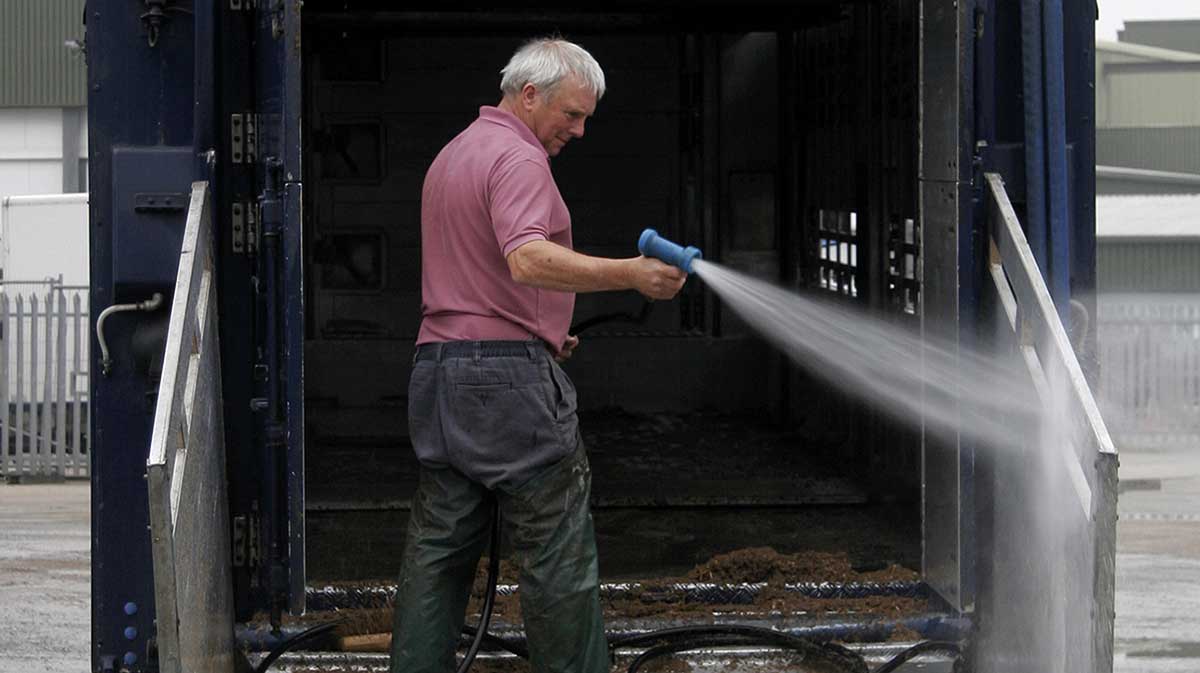The National Pig Association (NPA) has identified five key points to address the rising prevalence of swine dysentery, a concerning trend observed in 2024. At the recent Pig Industry Group (PIG) meeting held in December, veterinary and producer members emphasized the need for collective action to prevent the spread of this disease within the pig sector.
In response to these concerns, the NPA has outlined five crucial points that are applicable throughout the supply chain:
1. #MuckFreeTrucks: It is imperative for hauliers, abattoirs, and producers to ensure that vehicles are thoroughly cleaned and disinfected immediately after transporting pigs. Some pork plants have been flagged for substandard cleaning facilities and long queues, highlighting the need for improved standards in this area.
2. On-farm vehicle protocols: Pig producers should establish clear protocols regarding the movement of vehicles on their farms, including those of suppliers, delivery vehicles, builders, and contractors. Restricting access to certain areas can help prevent the spread of disease between farms, with strategic loading ramps being one effective measure to limit vehicle movement.
3. People movements: Strict protocols must also govern the movement of staff and visitors within the farm premises, including suppliers, delivery vehicles, builders, and contractors. Providing adequate personal protective equipment (PPE), footbaths, showering facilities, and implementing zoning measures can help minimize the risk of disease transmission through human activities.
4. Spotting symptoms: It is essential to remain vigilant for signs of swine dysentery, such as diarrhea and weight loss, and promptly report any suspicious symptoms to a veterinarian. Recent strains of the disease may present with less obvious symptoms, leading to delayed detection and confirmation of the illness.
5. Significant Diseases Charter: Vets and producers are encouraged to report all cases of swine dysentery to the Significant Diseases Charter, a requirement for Red Tractor assured producers that should also be followed by non-assured entities. This reporting system ensures that stakeholders in the industry are informed about the local disease situation, facilitating better disease management and prevention efforts.
During the PIG meeting, concerns were raised regarding the disparity between the number of official swine dysentery confirmations by the Animal and Plant Health Agency (APHA) and the cases reported on the charter. Addressing this inconsistency is crucial for enhancing disease surveillance and control measures within the pig sector.
By implementing these five key points across the supply chain, the pig industry can proactively combat the spread of swine dysentery and safeguard the health and welfare of pigs. Collaboration among stakeholders, adherence to protocols, and timely reporting of cases are essential components of a comprehensive disease prevention strategy.
For more information on preventing swine dysentery and other industry-related topics, stakeholders are encouraged to visit the NPA website and stay informed about the latest developments and initiatives in the pig sector.
